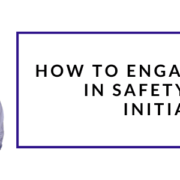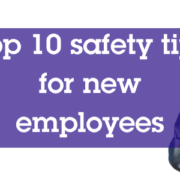Workplace Health and Safety Tips and Practical Steps
Essential Health and Safety Tips for Creating a Safer Workplace
Creating a safer workplace starts with a straightforward safety audit and maybe a few workplace health and safety tips. Try walking through your workspace and identify any common hazards that you can see, such as loose cables, slippery floors, and cluttered workspaces. If you can’t find any that’s excellent, your halfway there to a safer workplace. And if in the case you have found some this blog will help you keep things in order. For example, finding an extension cord stretched across a walkway is a danger but the solution may be as simple as securing it to prevent trips and falls or rerouting the cable to eliminate the hazard altogether. That’s why building a strong safety culture is important.
Encouraging open communication about safety concerns by holding regular meetings or having outlets where employees can voice their observations and suggestions should be considered. Remind everyone that safety is a collective effort! When employees feel responsible for not only their own safety but also their coworkers’, the workplace becomes significantly safer and equally more productive.
Introducing Safety Training and Developing Clear Protocols
Safety training doesn’t have to be complicated to be effective. Start with the basics like these workplace health and safety tips: ensure everyone knows the emergency exits, how to use a fire extinguisher, and the proper way to lift heavy objects to avoid injury. Use real-life scenarios in your training, such as what to do if someone spills a liquid on the floor—prompt cleaning and placing a “wet floor” sign can prevent slips. Develop clear safety protocols and make them easily accessible. For example, post a step-by-step guide on what to do in case of a fire near all fire extinguishers and exits. Make sure to regularly update and review these protocols to keep everyone informed and prepared.
Maintaining Clean Workspaces and Implementing Effective Safety Signage
Keeping your workspace clean and organised is one of the simplest yet one of the most effective workplace health and safety tips. For example:
- Designate specific places for tools and materials to avoid clutter.
- Ensure that spills are cleaned up immediately.
This reduces the risk of accidents like trips and falls. Effective safety signage is crucial, too. Use clear, visible signs to indicate hazardous areas such as “Caution: Wet Floor” or “Danger: High Voltage.” Labels on chemicals and equipment should be legible and informative. These signs and labels act as constant reminders for employees to stay alert and cautious.
Informing Employees and Ensuring Regular Equipment Maintenance
Involving employees in safety programs can make a big difference. Form safety committees where employees can participate in safety planning and share their insights even making their own workplace health and safety tips. Recognise and reward proactive safety behaviours, such as wearing personal protective equipment (PPE) without being prompted or reporting potential hazards. Regular equipment maintenance is also essential. Schedule routine checks and servicing for all machinery and tools. For instance, ensure that forklifts are inspected regularly and that any worn-out parts are replaced promptly. Well-maintained equipment is less likely to malfunction, reducing the risk of accidents.
Why you should follow these Essential Workplace Health and Safety Tips
By following these essential steps, you can significantly enhance workplace safety. Implementing these practical tips today ensures a safer, more productive environment for everyone. By taking common-sense actions and involving the whole team, you create a workplace where safety is a shared and manageable priority.










Great safety information
So helpfull
I would like to sbcribe digitally for your Monthly / Weekly newsletter / Publications , since i am currently an appointed OHS REP / CHAIRPERSON of our District / Regional OHS Sub Committee
Hello Terra,
You can quickly sign-up to our newsletter from our offers page here: https://www.sheilds.org/offers/.
Thank you for your interest in our publications.